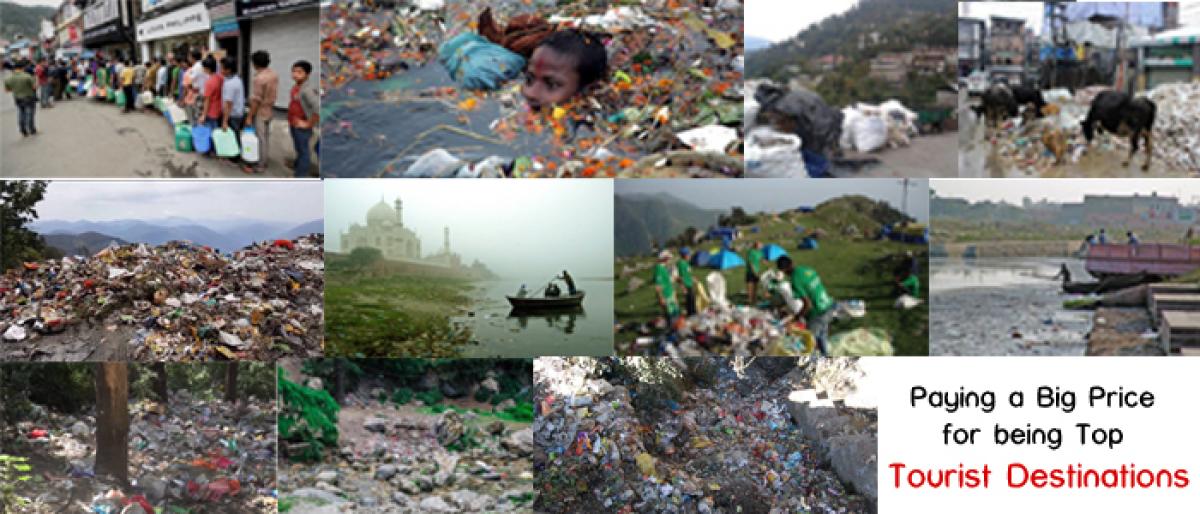Live
- Is Travel Insurance Mandatory For South Korea?
- PM Modi condoles loss of lives in Maha tragedy, announces Rs 2 lakh solatium
- 1MG Lido Mall to host 10th edition of Fashionable1
- M MK Stalin Urges PM Modi To Halt Tungsten Mining In Tamil Nadu
- Air India Pilot Suicide: Mumbai Police Probe Murder Case, Investigates Deleted WhatsApp Chats
- Family Of Three Brutally Murdered In Tamil Nadu's Tiruppur; Robbery Suspected
- Full-Mouth Dental Implants: A Game-Changer for Complete Smile Restoration in Hyderabad
- Rakesh Tikait Urges PM Modi To Ban Genetically Modified Seeds In India
- Understanding the Tax Benefits of the National Pension System (NPS) Under Section 80C and 80CCD(1B)
- BJP Slams Karnataka Government For Replacing Governor With CM As University Chancellor
Just In

If you happen to live in a place in India that is a popular tourist destination, you know the ugly consequences attached with it. While the tourists bring in money, they also end up disrupting local lives and resources. Here\'s a list of places that are facing a big ecological price by being a tourist destination.
If you happen to live in a place in India that is a popular tourist destination, you know the ugly consequences attached with it.
While the tourists bring in money, they also end up disrupting local lives and resources.
Here's a list of places that are facing a big ecological price by being a tourist destination.
Shimla
Latest and an unfortunate example of this is Shimla.
The city is experiencing acute water shortage. A high influx of people has led to an acute water shortage. Locals now have to stand in queues for hours to get a single bucket of drinking water.
Moreover, water is allegedly being diverted to VIP hotels.
The situation is so bad that people are sharing this message on social media so that fewer tourists visit the city this summer.
Varanasi
Regarded as the spiritual capital of India, Varanasi, the city of ghats, is suffocating under the layers of plastic.
Offerings of flowers and diyas to the Ganga as a gesture of reverence is actually polluting the river, so much so that you can't even take a dip in it, let alone using it for drinking purposes.
According to a research conducted in 2016, air quality in the city is 'most toxic in the country'.
Mussoorie
The Queen of Hills is unfortunately not treated as one.
There are plastic wrappers everywhere you look. The city produces as much as 25-30 metric tonnes of waste every day which is not disposed of properly.
Water shortage is also staring the city straight in the face. Next Shimla in making? Maybe.
Nainital
The famous Naini lake which is the main tourist attraction of the city is highly polluted now and has shrunk drastically, thanks to all the tourist activity.
Additionally, rapid construction has led to instability on hill slopes.
The condition is so bad that while the water reached 'zero level' only two times before 2000 (in 1923 and 1980), since 2000 it has reached that level than 15 times.
Agra
Agra, the home to one of the seven wonders of the world, Taj Mahal, is also unfortunately facing the brunt of being a popular tourist destination.
The monument has turned yellow over the years and one of the many reasons behind it, is too many tourists and too many vehicles that bring them to Agra.
From 40,000 vehicles in 1985 to more than a million now, Agra's air quality is getting worse with each passing day.
Goa
The 'Vegas of India' is beyond polluted due to mass tourism. With around 5 million tourists visiting the state from all over the world, and littering absentmindedly, it's no surprise that it has turned into a dump yard.
The Goan beaches are so dirty that National Geographic ranked them among the worst in the world, a few years ago.
Triund
Triund is facing the problem of tourists coming to trek and leaving waste on the top of the hills, without caring to pick it up and taking it with them.
A popular campsite, about 9 kilometres from Bhagsunag, hosts over 100,000 tourists every year, who produce an enormous amount of waste that can only be brought down on mules.

© 2024 Hyderabad Media House Limited/The Hans India. All rights reserved. Powered by hocalwire.com







